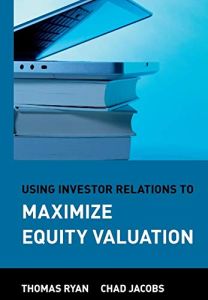Join getAbstract to access the summary!

Join getAbstract to access the summary!
Thomas M. Ryan and Chad A. Jacobs
Using Investor Relations to Maximize Equity Valuation
Wiley, 2004
What's inside?
Your company's investor relations hinge on knowing what stock information to give out, and when, and how.
Recommendation
Authors and consultants Thomas M. Ryan and Chad A. Jacobs, cofounders of an investor relations consultancy, provide a basic introduction to the ways of Wall Street that will be useful to new staffers in investor relations (IR) departments, or to companies that are deciding how to handle IR. The most valuable part of the book comes in chapter 20, where the authors offer companies a good guide to handling earnings releases and stock analysts’ conference calls. The least valuable part is the oft-repeated advice to companies that they should hire investor relations consultants - like the authors. getAbstract suggests this book to companies that are defining their investor relations function.
Summary
About the Authors
Thomas M. Ryan and Chad A. Jacobs are the co-founders and co-CEOs of an investor relations consultancy, and former managing directors of a corporate equity research department. Ryan helped lead at least $5 billion worth of investment banking transactions and was featured on CNNfn, CNBC, Money Talk (PBS), WNYC V and Bloomberg Television. Jacobs has had extensive media coverage and served as a roundtable member on CNNfn.
















Comment on this summary